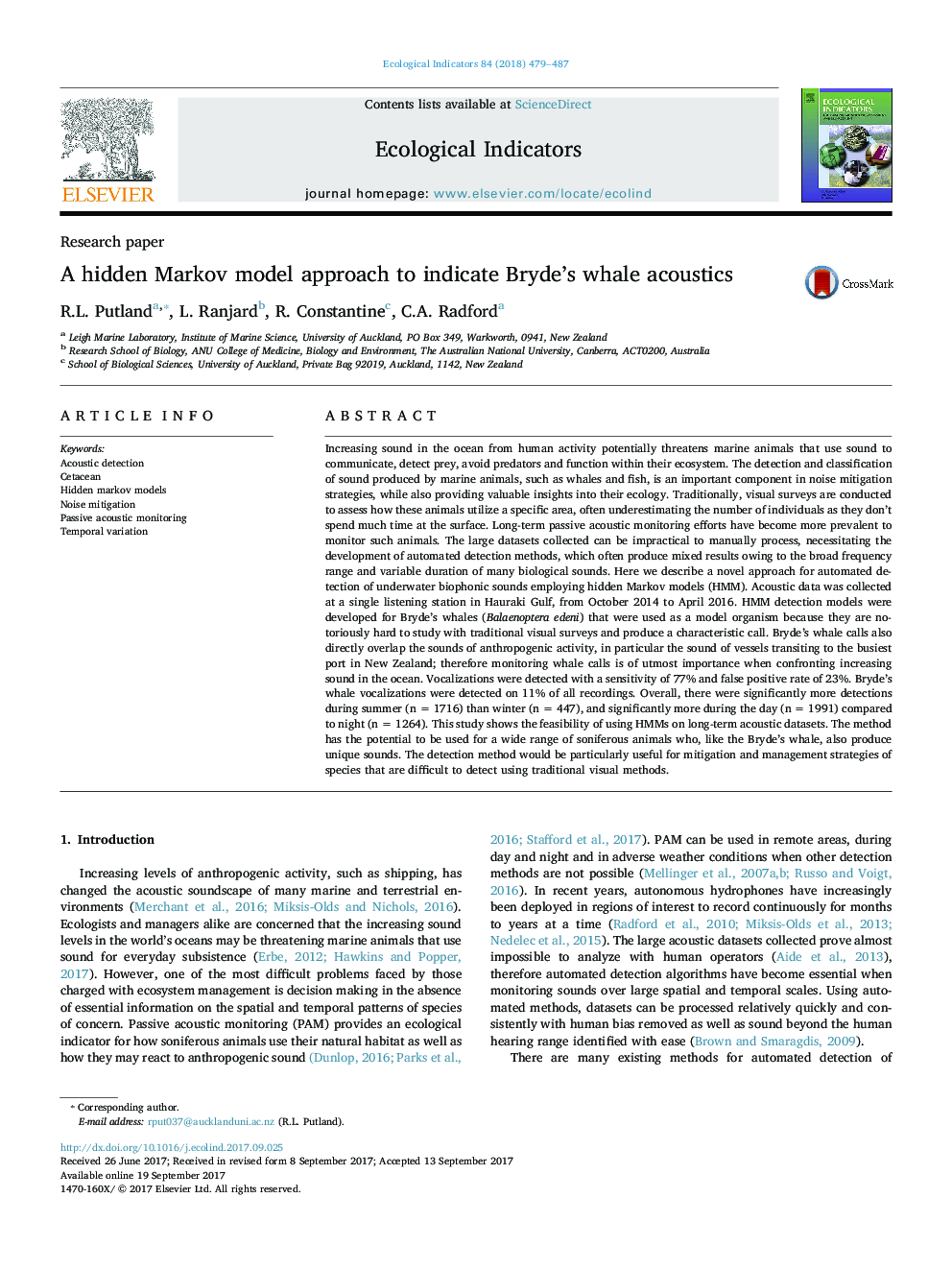| کد مقاله | کد نشریه | سال انتشار | مقاله انگلیسی | نسخه تمام متن |
|---|---|---|---|---|
| 5741571 | 1617118 | 2018 | 9 صفحه PDF | دانلود رایگان |
- A global concern that increasing human activity is changing sound in the ocean.
- We describe the feasibility of Hidden Markov models to detect underwater sounds.
- The results indicated the presence of endangered Bryde's whales over 17 months.
- We assessed the results of our method against human auditory identification.
- The detection of sounds provides vital evidence for management strategies.
Increasing sound in the ocean from human activity potentially threatens marine animals that use sound to communicate, detect prey, avoid predators and function within their ecosystem. The detection and classification of sound produced by marine animals, such as whales and fish, is an important component in noise mitigation strategies, while also providing valuable insights into their ecology. Traditionally, visual surveys are conducted to assess how these animals utilize a specific area, often underestimating the number of individuals as they don't spend much time at the surface. Long-term passive acoustic monitoring efforts have become more prevalent to monitor such animals. The large datasets collected can be impractical to manually process, necessitating the development of automated detection methods, which often produce mixed results owing to the broad frequency range and variable duration of many biological sounds. Here we describe a novel approach for automated detection of underwater biophonic sounds employing hidden Markov models (HMM). Acoustic data was collected at a single listening station in Hauraki Gulf, from October 2014 to April 2016. HMM detection models were developed for Bryde's whales (Balaenoptera edeni) that were used as a model organism because they are notoriously hard to study with traditional visual surveys and produce a characteristic call. Bryde's whale calls also directly overlap the sounds of anthropogenic activity, in particular the sound of vessels transiting to the busiest port in New Zealand; therefore monitoring whale calls is of utmost importance when confronting increasing sound in the ocean. Vocalizations were detected with a sensitivity of 77% and false positive rate of 23%. Bryde's whale vocalizations were detected on 11% of all recordings. Overall, there were significantly more detections during summer (n = 1716) than winter (n = 447), and significantly more during the day (n = 1991) compared to night (n = 1264). This study shows the feasibility of using HMMs on long-term acoustic datasets. The method has the potential to be used for a wide range of soniferous animals who, like the Bryde's whale, also produce unique sounds. The detection method would be particularly useful for mitigation and management strategies of species that are difficult to detect using traditional visual methods.
125
Journal: Ecological Indicators - Volume 84, January 2018, Pages 479-487
